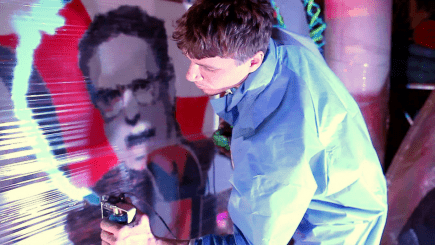This post is written by Maarja Pehk, COO at Buildit accelerator in Tartu, Estonia. She’s been involved in the creative industries for the past five years and holds an MA in Cultural and Creative Industries.
Whenever I tell someone that I work with creative industries startups, I tend to get a relatively confused look in response, followed by “… so what exactly are these creative industries?” Another one of my favourites – although it is happening less and less these days – is when they think that I mainly work with handicrafts.
Truth is, creative industries can be a confusing concept at first, especially as the aforementioned crafts are indeed one of the 9 (or 10, or 13, depending on the country and their definition) core fields of the creative industries. But so are advertising, design, publishing, performing arts and music, and even IT if it has some entertainment focus. So once I mention that Supercell or Spotify can be considered creative industries too, I’ve caught their attention. And when I add that in UK alone, creative industries are now worth £84.1 billion per year or that the sector is also responsible for 4.2% of the European GDP, it is usually enough to make them listen further.

SprayPrinter, from Buildit’s Fall 2015 class, has raised 122% of their crowdfunding target with still two weeks to go.
The further value of creative industries is however unearthed once creatives and designers collaborate with specialists from other fields, say engineers and developers. A couple of weeks ago I attended the FashionTech conference in Berlin and was astonished to see how it has grown from a small meet-up a couple of years ago into a full blown conference, uniting techies and fashionistas alike. One of the thoughts that kept reoccurring however was the increasing shift in using technology as design aesthetic.
That’s also why it’s so fascinating to follow the developments in the wearables scene, of which we are currently only seeing the tip of the iceberg. While the majority of the wearables out there seem to be more concerned with the functionality, it’s only the matter of time once technology blended with fashion and design really leaves the catwalks and installation spaces and the wrists (and bodies, in the case of smartwear) of early adopters for the mainstream.

There is so much more to the convergence of technology and creative industries though. While Buildit accelerator was originally set up as a pure hardware accelerator, we kept receiving more and more applications from companies who were mixing hardware with creative industries. Be it Heelosophy, making wearing high heels more comfortable with bespoke insoles, Sensition and Razorfocus creating new solutions to help the film industry, or Sprayprinter who is currently on the track of helping everyone to become an artist – all of them are combining traditionally creative industries fields with hardware.
That’s why Buildit’s 3-month mentor programme is now open to both hardware and creative industries companies. There is only two weeks left to apply for the spring 2016 batch at www.buildit.ee/apply.





